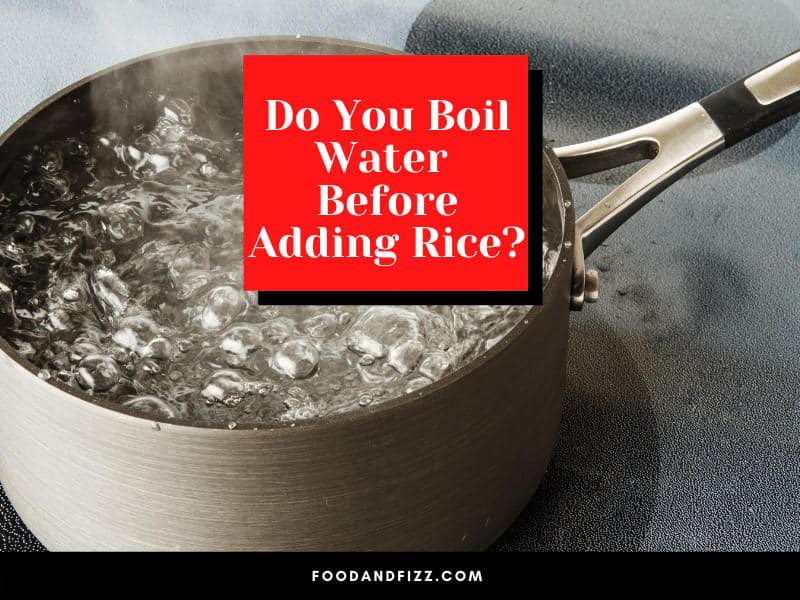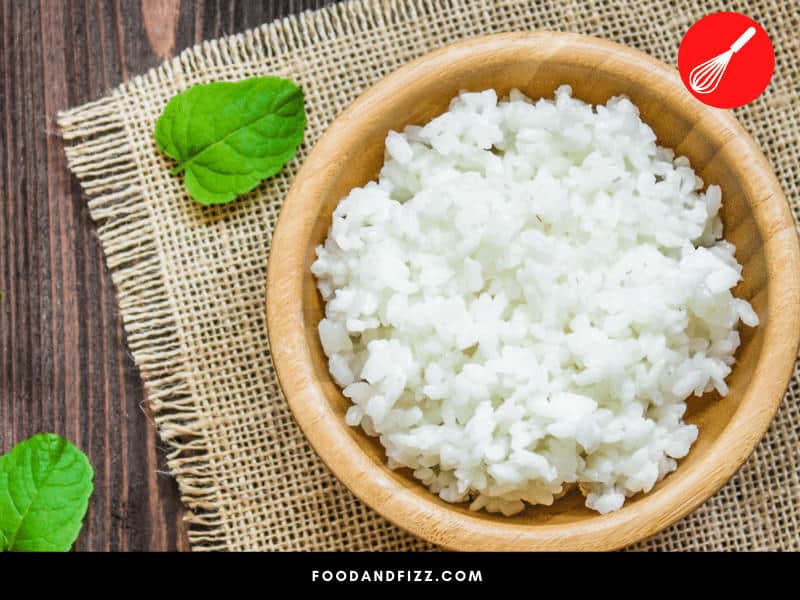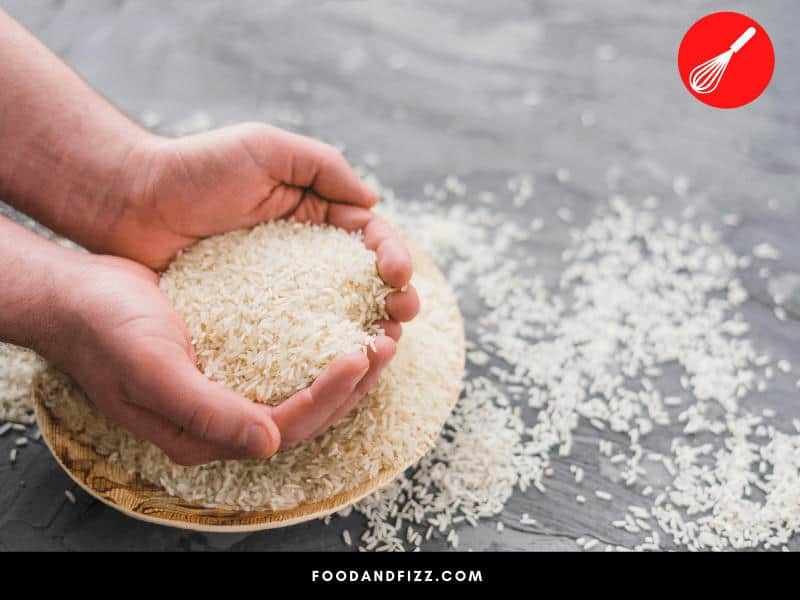Do you know the best way to make perfect rice? The answer might surprise you. There are a few different methods that people use, but the most important part is understanding when to add the rice and when to add the water.
In this article, we will discuss the science of boiling water and adding rice, so that you can make perfect rice every time.
Do You Boil Water Before Adding Rice?
You boil water before adding your rice. This is because boiling water helps to cook the rice evenly, and prevents the formation of clumps.

Why Do You Let Water Boil Before Adding Rice?
The reason you’ll want to let your water come to a boil before adding rice is that boiling water helps to cook the rice evenly. When you add rice to boiling water, the heat is distributed evenly throughout the grain, cooking it perfectly.
If you don’t let the water come to a boil first, your rice will have an extended amount of time in the water and might become mushy when you are done cooking.
This is because the rice has been exposed to more water and will start to absorb the water before it has even started cooking.
As the water heats to a boil and the rice warms up with it, the excess exposure to water will effectively make the rice softer and break down the outer barrier.
Your rice won’t have much of a structure after cooking and will end up being more of a grits consistency rather than a harder rice grain.
If you let the water come to a boil before adding in the rice then you have greater control over the texture of your rice as you are cooking.

Is It Unhealthy to Add Rice to Unboiled Water?
There are no negative health effects of adding rice to water that hasn’t come to a boil yet.
The rice itself will still be safe to eat and there won’t be any harmful bacteria growing in the water.
The only thing that you might have to worry about is the rice not cooking evenly if you don’t let the water come to a boil first.
If your rice isn’t cooked evenly, then some parts might be overcooked while other parts are undercooked.
This can make the rice taste unpleasant and can also lead to indigestion.
So, while there are no health risks associated with adding rice to water that hasn’t come to a boil yet, it is still best practice to let your water come to a boil first.
This will ensure that your rice is cooked evenly and tastes great.
Should You Cover the Water While it Boils?
It’s best practice to use a cover while your water is boiling.
This is because a cover helps to trap the heat, which will make the water boil faster.
As the water is boiling the heat that would normally escape gets trapped inside the pot and creates a hotter environment.
There is usually some kind of small hole on the cover to let out a little steam so that the cover doesn’t pop off at any point due to excess pressure caused by the boiling water and heat.
Covering your boiling water also prevents evaporation, so you won’t have to add as much water to your pot.

This really makes a difference in the texture of your rice because even though you might have the perfect amount of water to start with, evaporation can cause the rice to be too hard.
If your rice is too dry it will end up being hard and crunchy, rather than soft and fluffy. This is because there wasn’t enough water to absorb into the rice itself so it doesn’t get soft and tender.
If you are making a lot of rice, then you might want to consider using a rice cooker.
Rice cookers have a timer that you can set so that your rice is cooked perfectly every time.
You won’t have to worry about the water boiling over or the rice being overcooked because the rice cooker will turn off automatically when the timer goes off.
A lot of rice cookers also come with a steamer so that you can steam vegetables or fish while your rice is cooking.

Does It Take Longer When Rice Is Added Before Boiling?
The amount of time the rice cooks shouldn’t be affected if you add the rice before the water boils off or if you add it afterward.
If anything, the rice should already be absorbing more water before you cook it to a boil so the time might go even faster.
Of course, adding the rice before the water boils will cause it to become mushier in the cooking process.
Different grains will cook at different times depending on how much water is in the pot to begin with.

Conclusion About Do You Boil Water Before Adding Rice
It’s important to add your rice to the water after it has boiled. This is because you are giving your rice the proper amount of time to cook correctly as soon as it hits the water.
The only thing that you might have to worry about is the rice not cooking evenly if you don’t let the water come to a boil first. If your rice isn’t cooked evenly, then some parts might be overcooked while other parts are undercooked.
Frequently Asked Questions About Do You Boil Water Before Adding Rice?
Do different rice grains boil the same way?
All rice grains will cook the same way with water no matter if you are using jasmine rice, basmati rice, long-grain rice, or any other type. The real difference will be in the amount of water you need to add to the rice.
Do you need the same amount of boiling water for each type of rice?
You should not be adding the exact same amount of water to every type of rice because they all have different absorbency rates. For example, basmati rice will need less water than jasmine rice because it is long-grain rice and has less surface area for the water to absorb.

